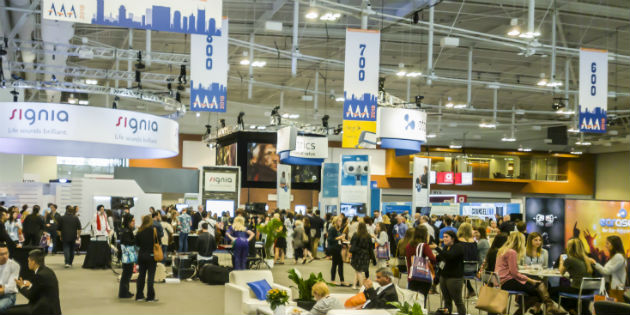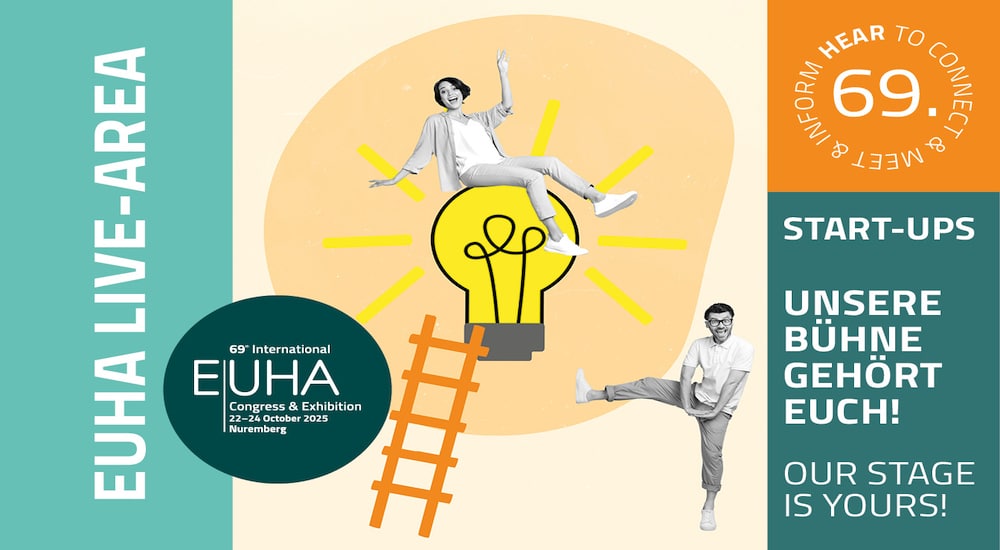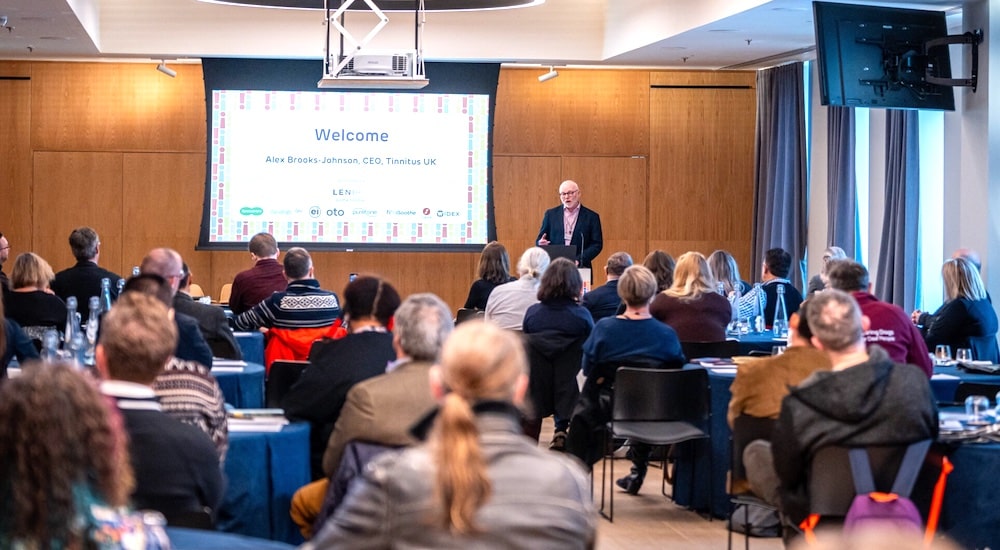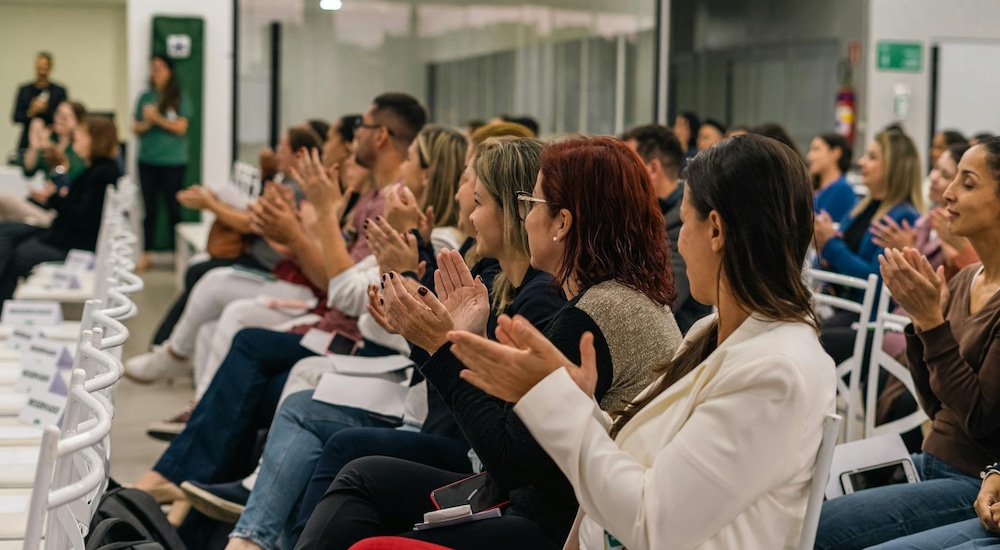AAA: 30 years and still going strong
AAA18
“Everyone welcome, music is the universal language”. This was the catch phrase used to advertise the 2018 Annual Conference of the American Academy of Audiology (formerly AudiologyNOW!), held in the capital of country music, Nashville, Tennessee.

But here, audiology was the universal language from April 18 to 21. A massive 6,042 people from some 43 different countries came together at Music City Center in downtown Nashville. Music was still a huge part of the event though. After all, the Academy did have something special to celebrate for this 30th edition!
The conference celebrated this milestone anniversary with various shows during the kick-off on the Wednesday evening, entitled “Celebrate Audiology”. At the event, participants were able to enjoy the talent of various bands and artists across the venue, and they were able to get a photo with the one and only Elvis, Dolly Parton or Johnny Cash. For the rest of the conference they were able to attend a wide range of seminars and learning labs, and got to know the latest products and developments showcased by the numerous manufacturers. Starkey was once again not present this year, and GN ReSound also decided not to hold a stand this year, but rather to hold seminars. The number of delegates has been on the decline these last few years. The key question was thus whether the AAA still has a strong voice. Or is the conference becoming less relevant?
Overall, the number of visitors at this year’s event increased sharply. Just short of 5,000 participants in 2017 to over 6,000 this year. A considerable jump. According to the organizers, the fluctuations are also associated with the attractiveness of the venue and how easy it is to reach. In this area, Nashville fares very well. And the hall was full to capacity during the general assembly on the Thursday morning, even though the attendees had to join in at 8 am, after the party evening the day before. The 30 years of the AAA were the main theme of the assembly, starting with a retrospective video of the beginnings of the organization in 1988. Fred Bess, program chair at the very first conference, went on stage along with Eileen Rall, who took on the role for 2018. “Thanks to the meetings you started, we became the innovators, care providers, and leaders in hearing healthcare for the next 30 years and beyond”, said Eileen Rall, thanking Fred Bess and the founders of the Academy. She underlined the importance of the event: “We are here with colleagues from across the globe. This shows that we are one of the most cooperative professions out there.”
AAA chair, Jackie Clark, looked back on achievements, but also to the future as part of the general assembly. She mentioned how much the Academy had changed since its inception in 1988. “We’re dealing with consumer-driven healthcare”, she said. “People now use Dr. Google to diagnose their conditions. On social media and ranking websites, consumers can share their opinions of caregivers. People only go to the professionals if they can’t do it themselves.” Self-directed and self-managed healthcare is what Clark calls it. But we cannot change cultural trends, she added. “We will continue to develop as a professional group, growing and prospering, as long as we remember that we are not determined by our past. We need to be the architects of our future; we must recognize our own limits and short-comings in order to overcome them.”
Policies and OTC
This was a good transition to the keynote speaker of the day, Healthcare Futurist, Dr. Jeff Goldsmith, who also painted a picture of the future. His presentation had a striking political slant, in which he discussed health policy under Presidents Obama and Trump. But given that Trump’s arrival is a topic of discussion in all walks of life, and that policy decisions are decisive for both professionals and patients, it’s not surprising that this also came up at the audiology conference. Dr. Goldsmith began talking about the problems of the baby boom generation, who voted far more for Trump than the younger generation (the average Trump voter was 57 years old), and this is an important target group for hearing professionals. Many of them are underprivileged, in a poor state of health, and their generation is a “political loose cannon”, according to the speaker.
Mortality figures are skyrocketing in the United States, by comparison with European countries. For Goldsmith, this is a sign of the beginnings of an overall health crisis in the country. More than half of the American population does not have enough money for healthcare, doesn’t have suitable health insurance, and clearly cannot afford hearing aids worth 3,000 dollars if they need a pair. And if your life is on the brink of falling apart, hearing healthcare is not top of your list, says Goldsmith. So this is not a good forecast for the hearing care of Americans, despite economic growth. Goldsmith sees over-the-counter hearing aids as part of the solution to this problem, to increase the number of people who could improve their hearing.
Over-the-counter devices were also a topic dealt with by Jackie Clark. She talked about the over-the-counter reading glasses that she has all around her house, which are naturally available anywhere. Perhaps this will also be true for hearing aids. And the OTC law was approved by Pres. Trump on August 18, 2017, but is not yet implemented. The hearing sector in the US is waiting to see what the law will bring. “We’ll see”, seems to be the general consensus on the topic at the moment. It’s a done deal; the decision has been made. No heated debates, but rather a wait and see approach on this issue.
People also think that things have calmed down because some time will pass before something is made of the law, and before the corresponding regulations are made available. We’re waiting to hear how the federal authorities plan to implement the law on a practical level. There is, however, a certain degree of stress. Many see OTC as a new example of how hearing healthcare professionals may lose control over patient care, and as a potential loss of quality in care. Hearing loss is a serious condition, and many are not comfortable with the idea of self-care and self-diagnosis.
So OTC is still one of the items on the agenda, but others, looking to the future of audiology, also received much attention from the participants. Examples include specific sessions on remote care and the role of big data in the sector. The topic of female leadership was also addressed in another core session (AAAF session) by Tacy Byham in a lecture called ‘Lead like a girl’; on Thursday April 19.
On female leadership: “There are more CEOs named John than the total number of women CEOs”
Byham’s talk was not strictly about audiology, but it was completely relevant for (particularly female) professionals working in the hearing sector. Byham is CEO of DDI, an international consultancy firm in the area of human resources. She wants to give a boost to the impact women can have on their careers, she told the audience. She herself faced many challenges when she took the leap to CEO of the company three years ago. People whom she met professionally for the first time didn’t realize she was the CEO, but thought it was the man who was with her. These types of frustrations gave her the strength to bring about change. Through the a lways commercial “Like a Girl”, she showed how young girls can have a strong self-image, but how this image often deteriorates over the years. “We have seen women’s marches, New Zealand has a woman President who is pregnant, and we see inspiring examples in the media. With #Metoo, we saw women who are not afraid to speak out. But the problem is that we have passed over so much potential. Women don’t believe completely in themselves, or others don’t. What are we missing out on personally and as a society because of this?”

And this is not a woman’s issue, Byham says. It’s a business issue. Organizations that achieve top performance have twice as many female leaders. And in the consumer market, women make 85% of the purchase choices. Clearly an important group. Women are a majority among the highly educated. But there are still more CEOs called John than the total number of female CEOs. There are various reasons underlying this. Only one in four participants in “high potential pools” within companies are women. In these pools, members of staff are put on a special track that makes it easier to reach a high position in the company. The most important thing, though, is what Tacy Byham calls the confidence gap between men and women. “Express what you want from your job, don’t defend yourself, and ask yourself what you want from your career”, she says. “Too often, we don’t do that, even though it’s so important. Let people know what’s important to you in your work/home balance: promotions, responsibilities, opportunities, salary.” Pay for the same work is not on the same level for men and women. In Hollywood, the differences have been made widely known in the last few years, and that led to a movement for equal pay. Salary differences have multiple causes. Among other things, from the start salary negotiations are skewed: 7% of women and 57% of men negotiate their salary.
Women may also suffer from the so-called “imposter complex”, the feeling that you are in fact not qualified and that you will be found out. “Men have waffle brains, subdivided into compartments, while women have spaghetti brains”, says Byham, “and this is very important.” It has both positive and negative sides. Spaghetti brains are more likely to have concerns and internal criticism.

Body language is also important in the workspace, Tacy Byham told us. Like the superhero stance. Derived from the “power pose”, which Amy Cuddy popularized. Taking a powerful stance can make a difference in how you feel, research has shown. If you turn up with a superhero stance, your self-confidence will get a boost. A useful thing to do before you walk into a stressful meeting. “You fake it, until you become it”, says Byham. Alongside body language, use of speech is also something women can work on. For instance, women use the word “we” far more often than men do, in comparison with the word “I”’. “Speak ‘I’ language”, Byham adds. “Take the credit you’re due. Say ‘I know’ rather than ‘I hope’ or ‘I think’. And stop saying things like, ‘I may be wrong, but…’, or ‘Sorry to ask, but…’. Use decisive speech.” The speaker also says that stubbornness in children should be embraced, so that they develop their willpower. Men are 11% more impulsive than women, and thus take on more risk. “They have a ‘just do it’ mentality, rather than ‘don’t do it unless I know I can do it’”, says Byham. And of course in reality, the differences between men and women are not so black and white. Although opportunities may not be divided equally, there is lots of work to do. Byham had no information to share about the audiology sector, but there is no reason to assume that audiology differs from other sectors.
Facts and figures: AAA 2018
- Attendees: 6,042, including 1,306 students
- International attendees: 575
- International visitors from manufacturers: 200
- Most ex-US participants came from Canada (179), and most foreign participants from manufacturers from Denmark (52) and again Canada (47)
Next year, the conference will be held in Columbus, Ohio, from March 27 to 30.
Photos: Femke Noordink


